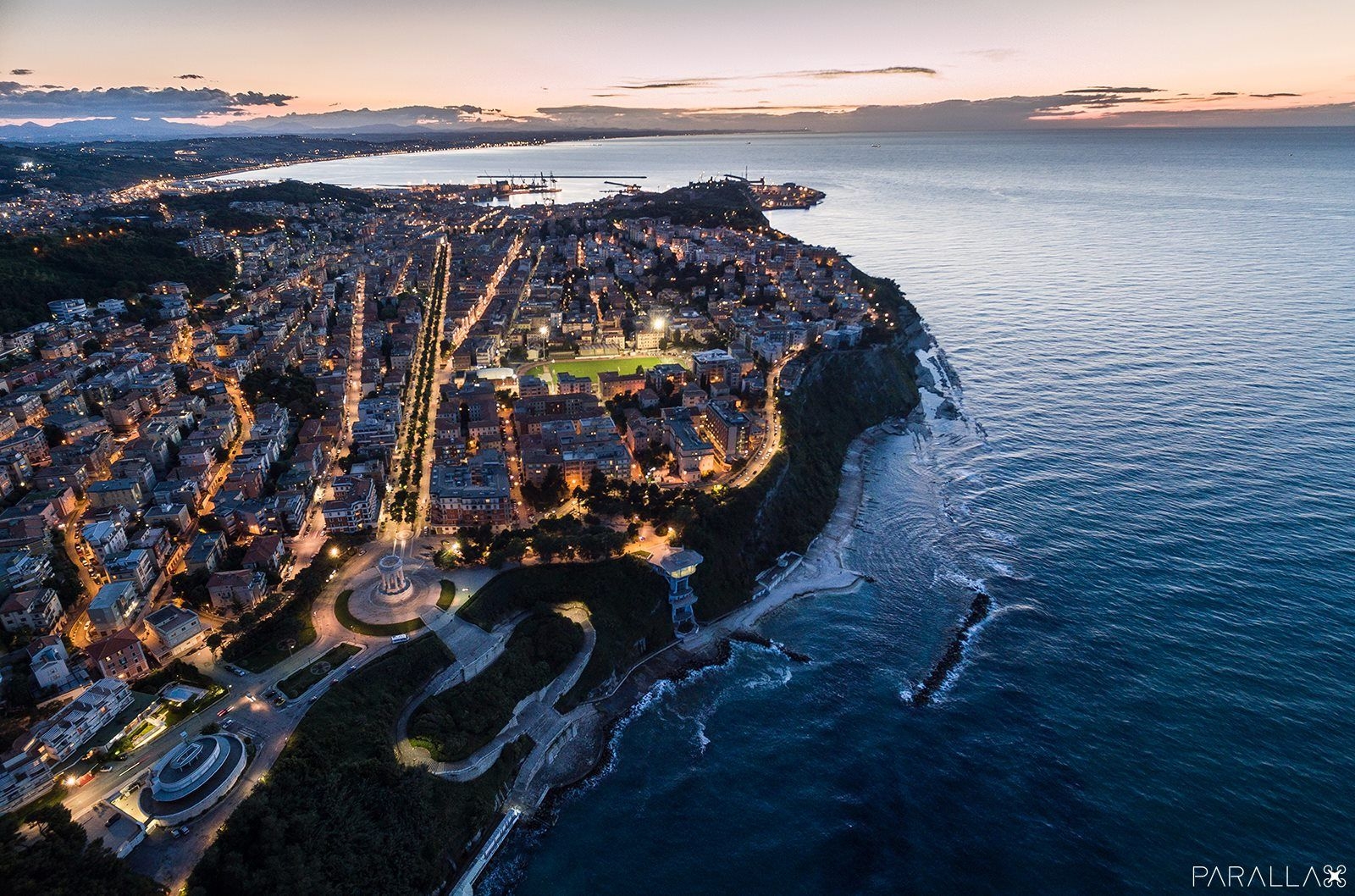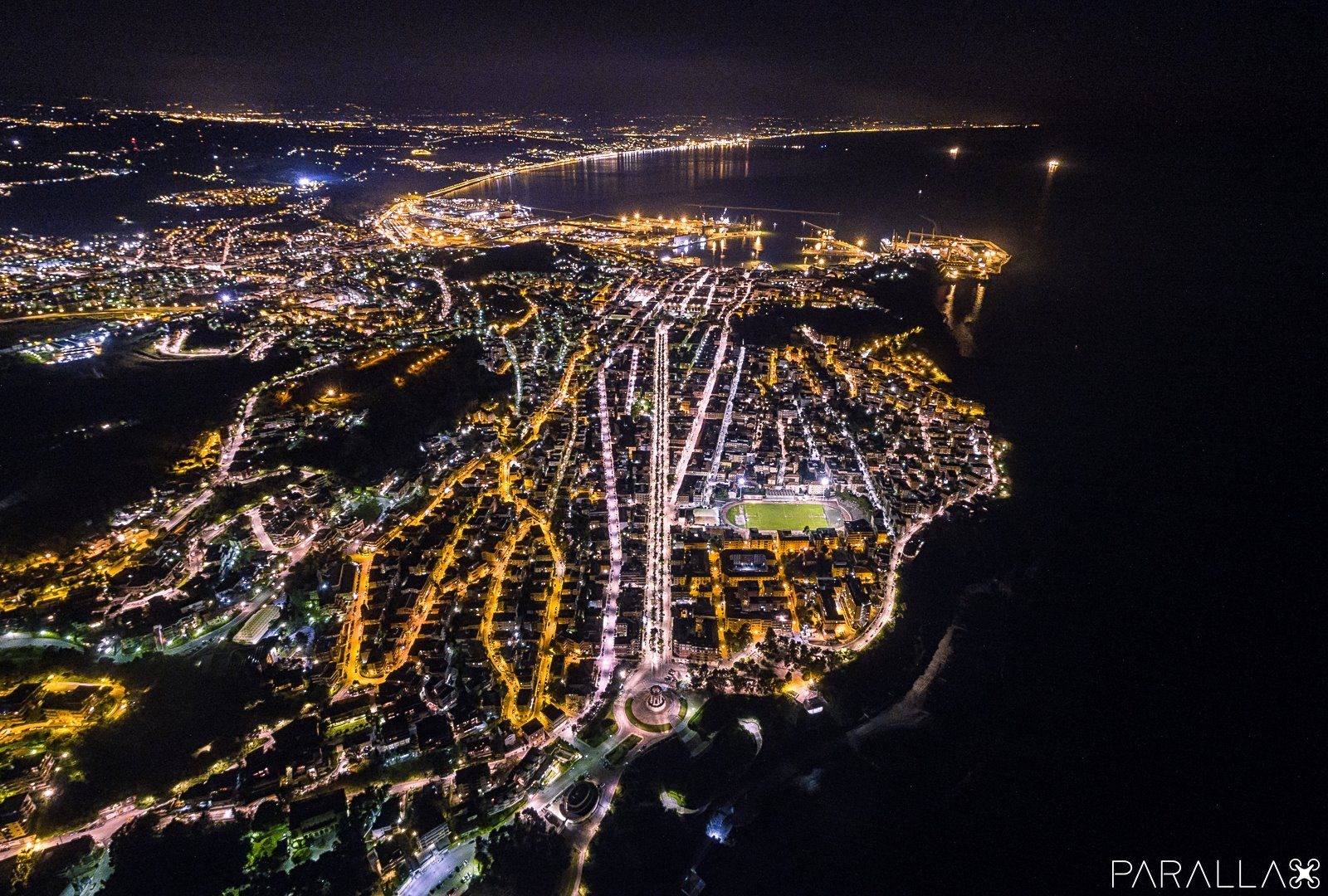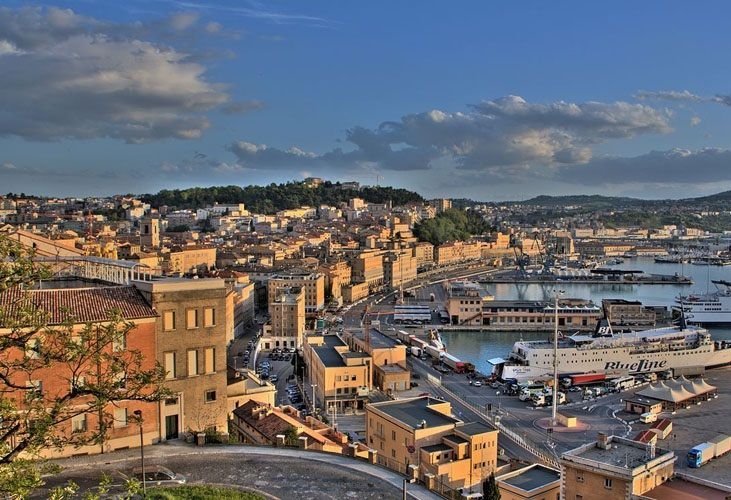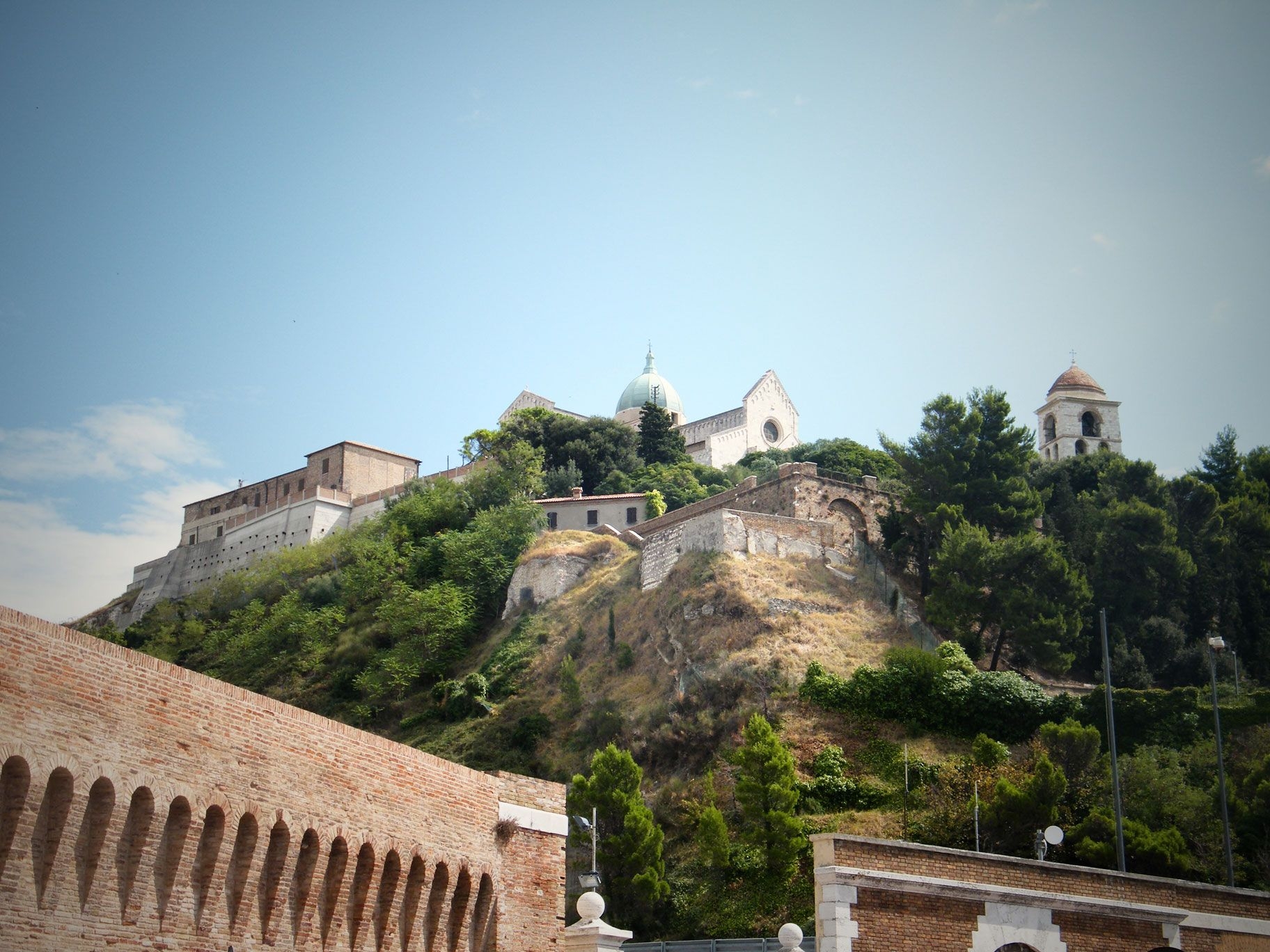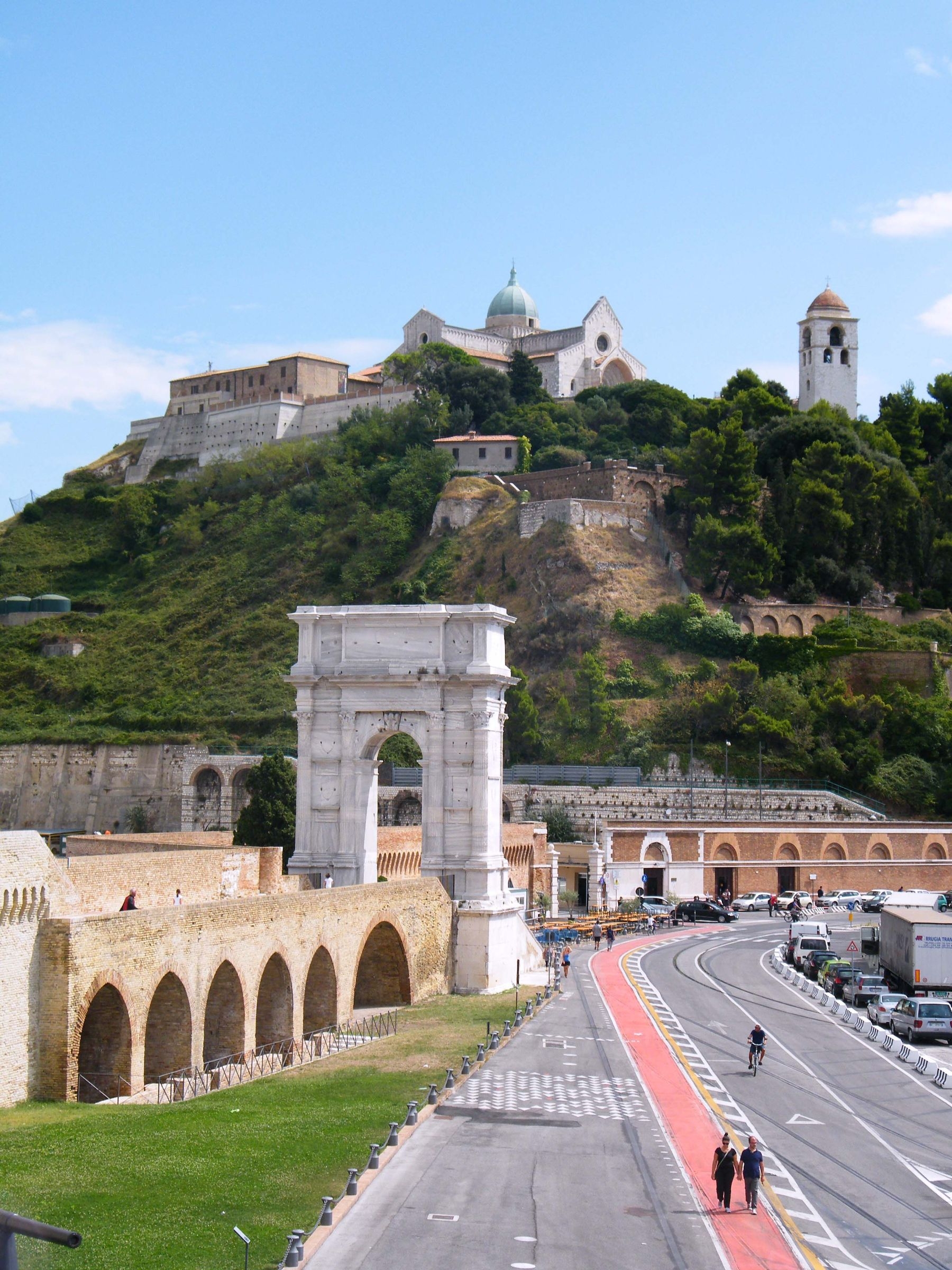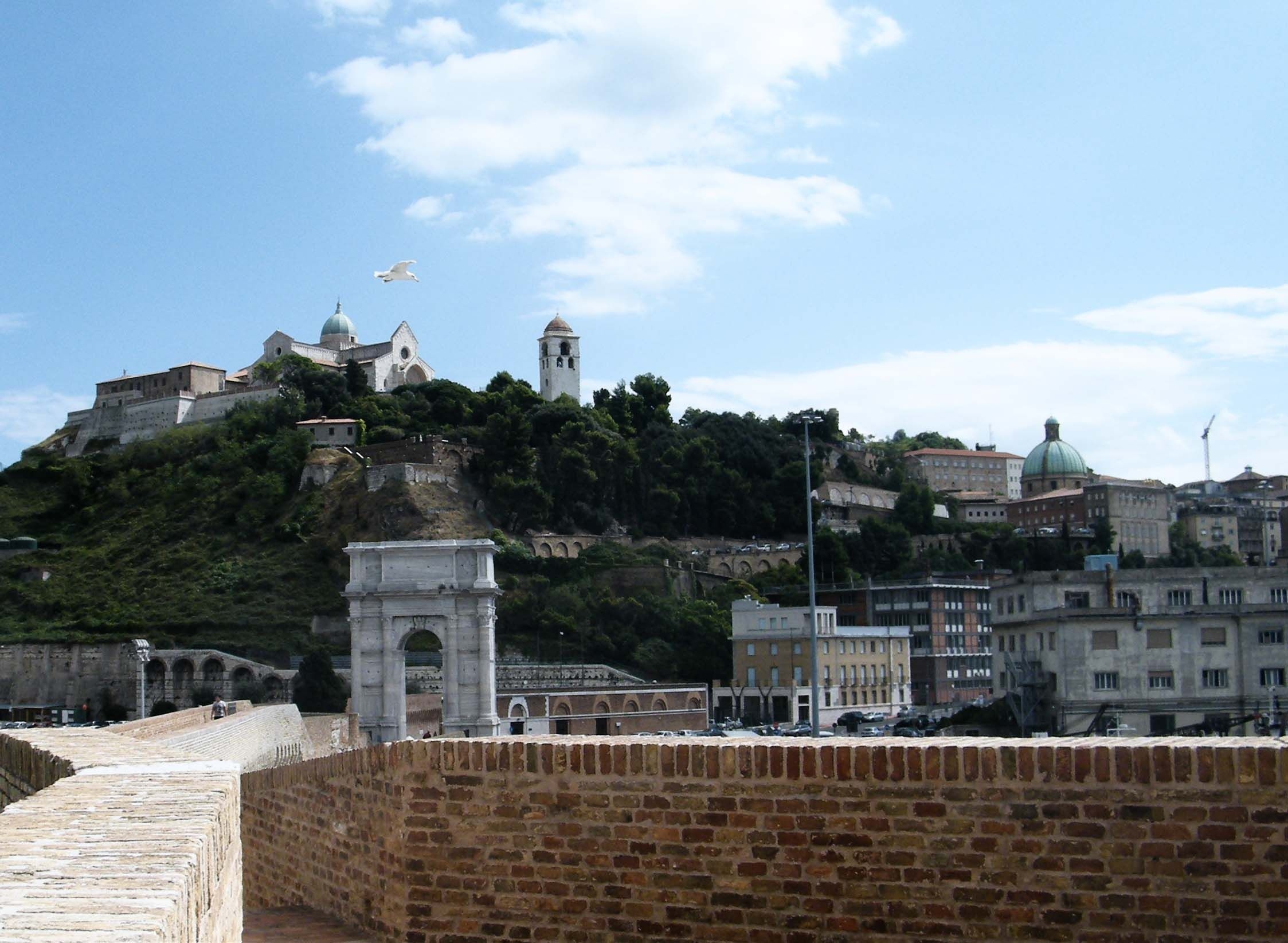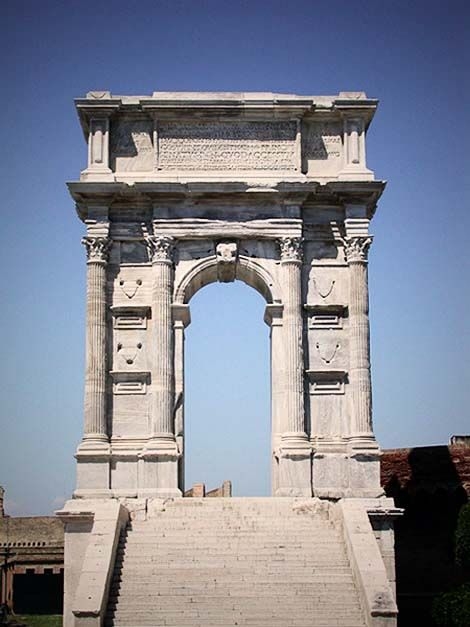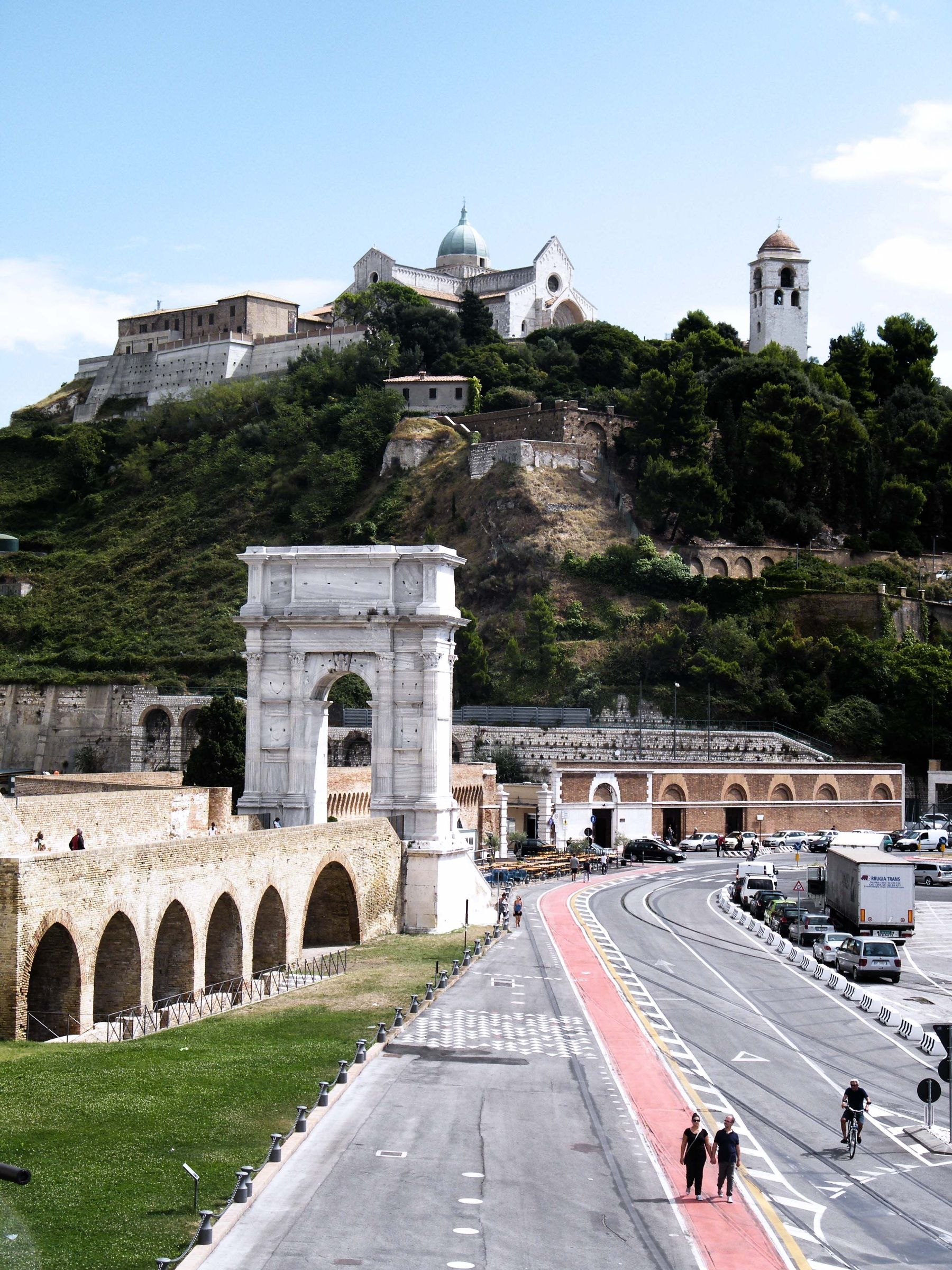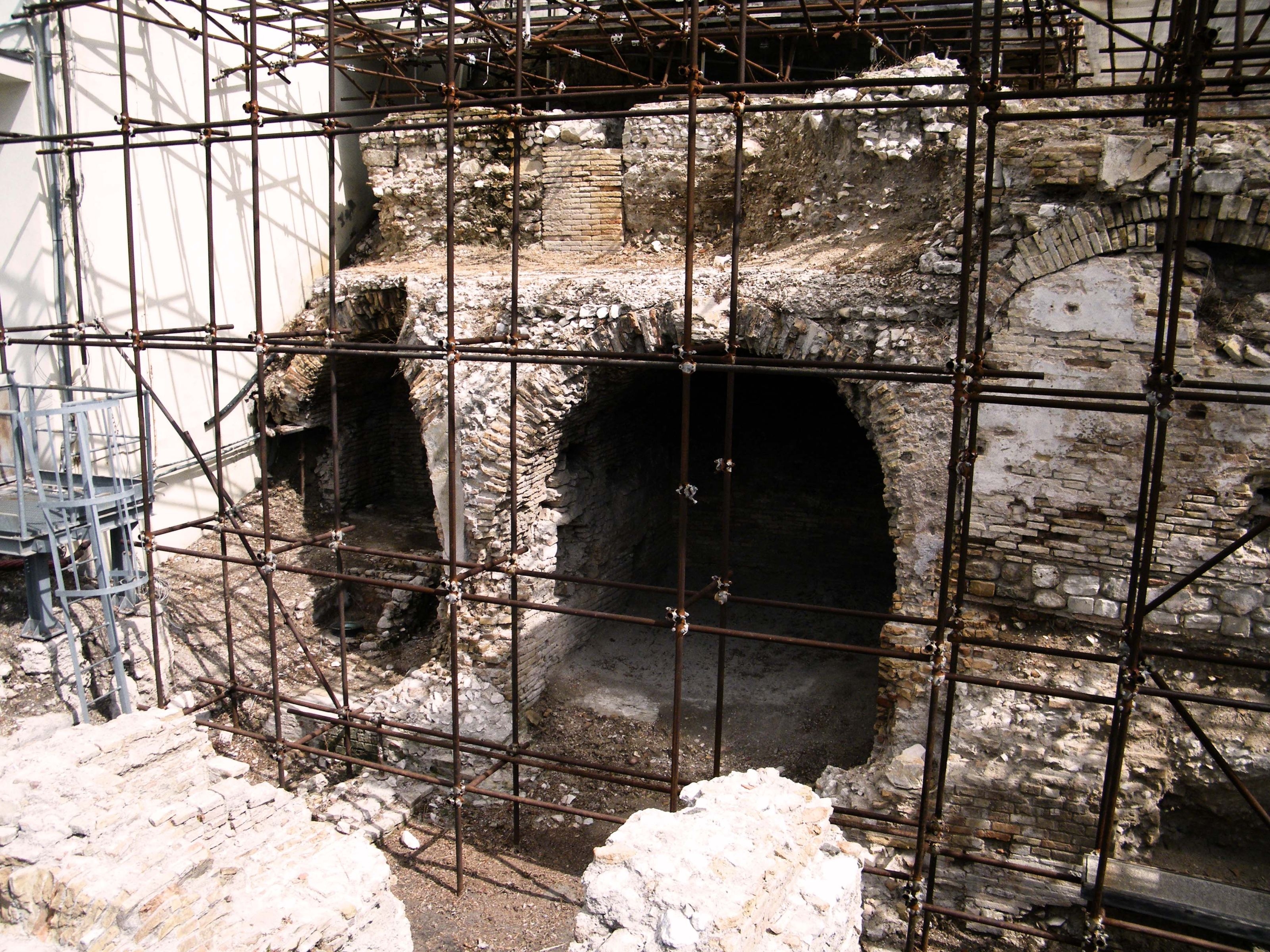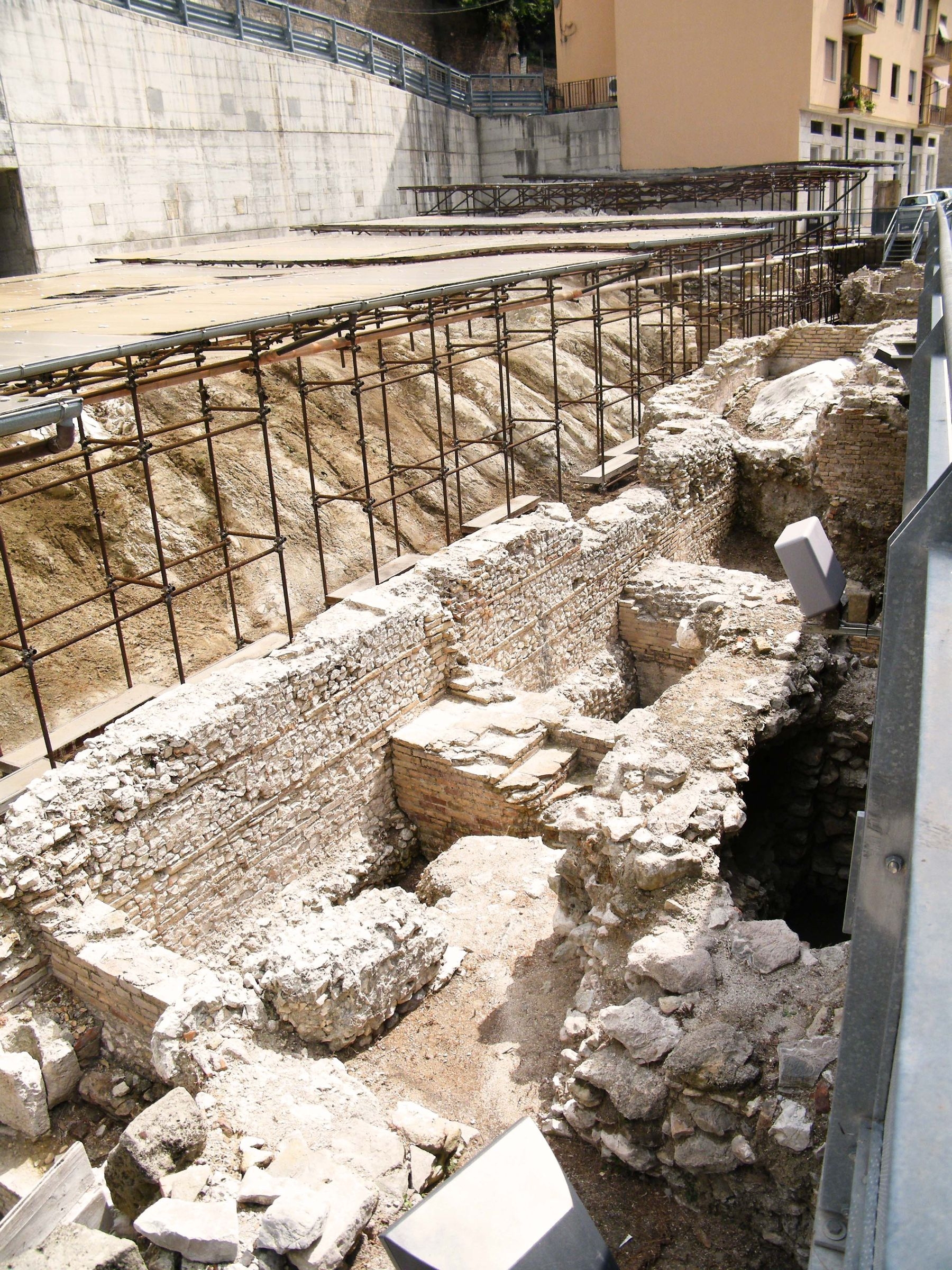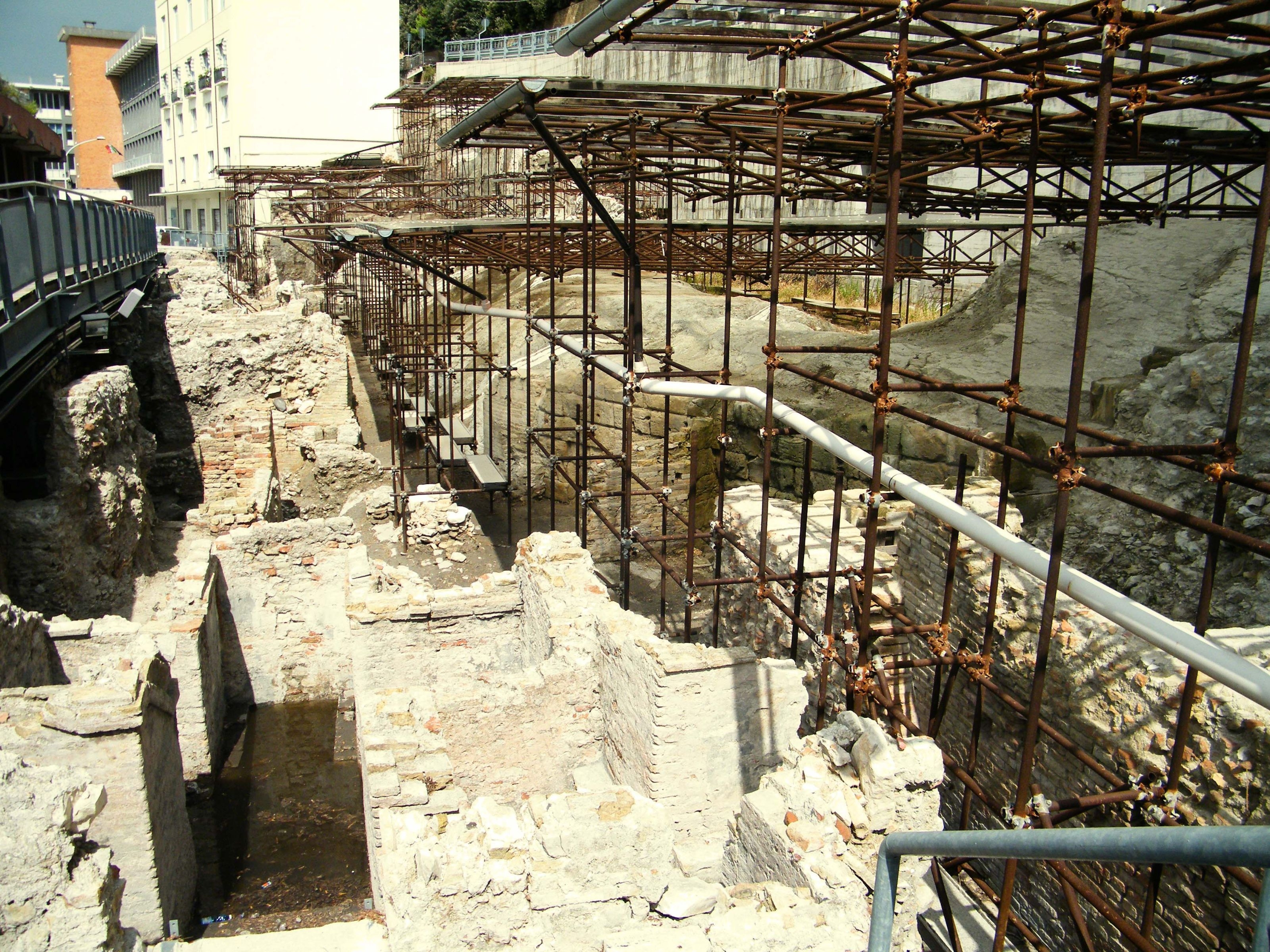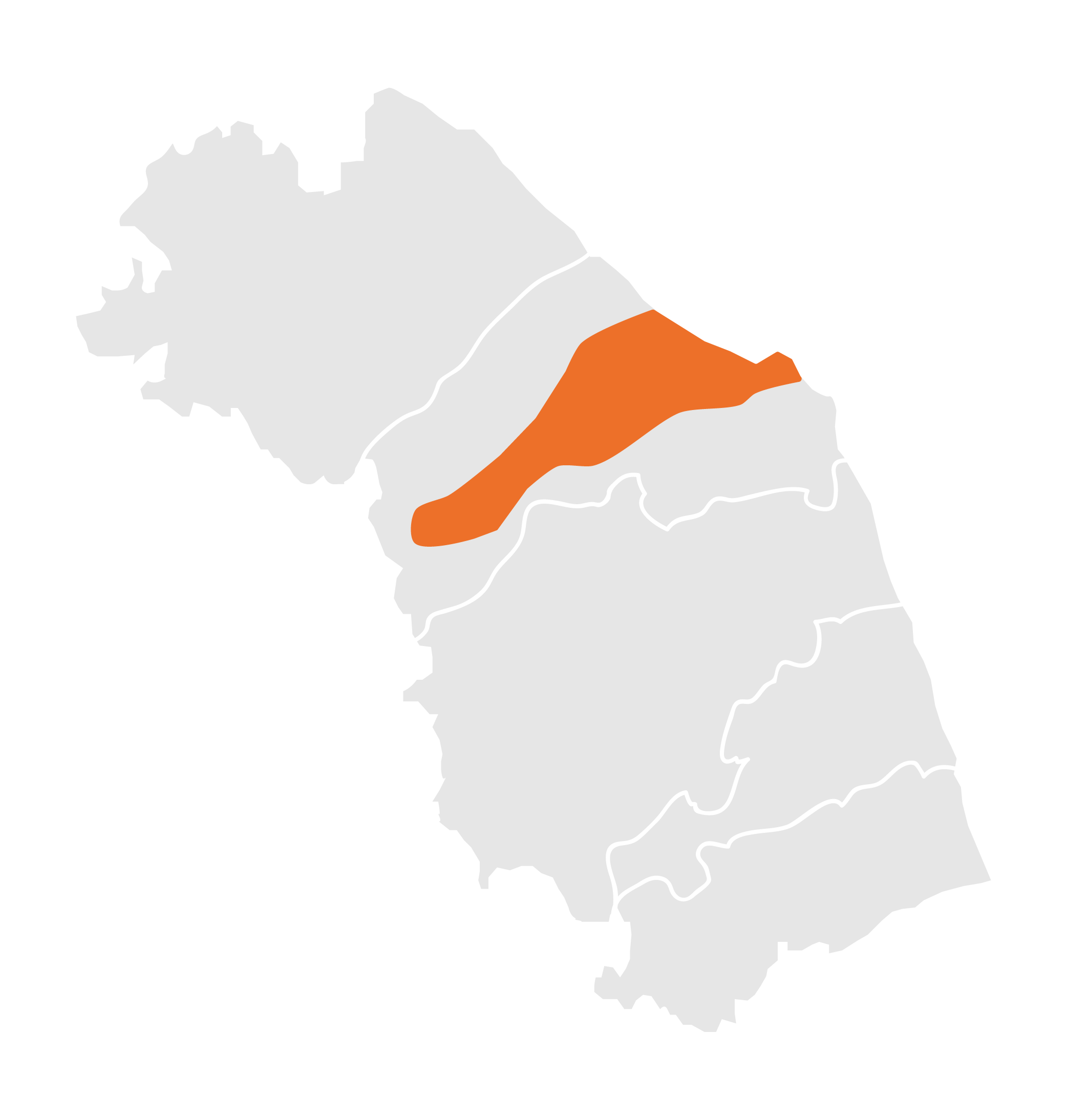
Located in the center of the Adriatic basin and at the foot of Monte Conero, the most important promontory on the central-northern Adriatic coast, Ancona has always been considered a point of reference for sailors and merchants engaged in routes from Greece to northern Italy. The city owes its name to its particular geological conformation: here the foothills of Mount Conero bend outward to form a kind of rocky “elbow”. The origins of Ancona are to be found in the hilly areas of the Cardeto, Cappuccini and Guasco hills, where human activity is documented since the Antique and Middle Bronze Ages. In the suburban area, the Montagnolo hill, a location permitting control over activity along the coast, has turned up fragments of Mycenaean ceramics (14th-13th c. BC) attesting not only to human activity in the area but also to early relations of the local population with the Aegean world. This site also gave up fragments of Greek ceramics and Picene materials, dating from the 5th to 4th c. BC, which permit the inference of human activity in the area even in Hellenistic times. In the 4th c. BC, the Syracusans, having understood the strategic importance of the site, founded a colony here, though to date there are few archaeological finds regarding this phase. Between the end of the 3rd c. and the 2nd c. BC, Ancona entered the orbit of the Roman state when it was chosen as a Roman base for the control of the Adriatic during the Illyrian Wars. To this time are attributable some of the archaeological testimony still visible, such as the defensive wall and the temple found under the Cathedral of Saint Cyriac on the Guasco hill. Having become a Roman municipium in about 90 BC and a Caesarian colony in 42 BC, it was with the Emperor Trajan that the most important urban works took place. The port of Ancona, chosen as the bridgehead for the conquest of Dacia, was equipped with a new pier, and the area dedicated to the storage of boats was expanded with the addition of new warehouses and representative offices. After Constantine, Ancona lived a phase of profound political instability due to Imperial decadence and subsequent Barbarian incursions. The city continued to base its power on the port even during the Byzantine Age, becoming the most important Adriatic maritime center in relations with Byzantium and the Eastern Mediterranean. A large number of archaeological finds bearing witness to the evolution of the city are exhibited in the National Archaeological Museum of the Marche. The museum holds, for example, a wide selection of funerary items from the Hellenistic necropolis of Villarey and Corso Amendola as well as part of the ceramic finds from the excavations of the Roman port of Lungomare Vanvitelli.
We have found no place to eat in the vicinity
We have found no place to sleep in the vicinity
Da Pesaro a San Benedetto del Tronto, lungo la costa Adriatica, alla scoperta dei principali porti e approdi frequentati dall’età del bronzo a oggi. Alla foce di fiumi e torrenti, entro piccole baie, promontori e grandi insenature, si svilupparono nell’antichità porti, porti canale, empori o semplici approdi. Questi scali furono il fulcro di una fitta rete di commerci marittimi che hanno dato vita a un intenso dialogo tra oriente e occidente, testimoniato dai ritrovamenti di reperti provenienti da tutto il bacino del Mediterraneo.
Nelle zone di confine dell’entroterra marchigiano i principi umbri di Camerino vivevano a contatto con numerosi villaggi, anch’essi retti da principi guerrieri piceni. I pregevoli corredi delle necropoli, risalenti alla fine dell’VIII - inizi VI sec. a.C., documentano i fitti scambi con l’oriente greco e con l’Etruria e attestano il ruolo cruciale di queste popolazioni nei traffici mercantili tra Adriatico e Appennino, che essi controllavano e da cui traevano le loro ricchezze.

|
Address | Largo XXIV Maggio 1 Ancona |
